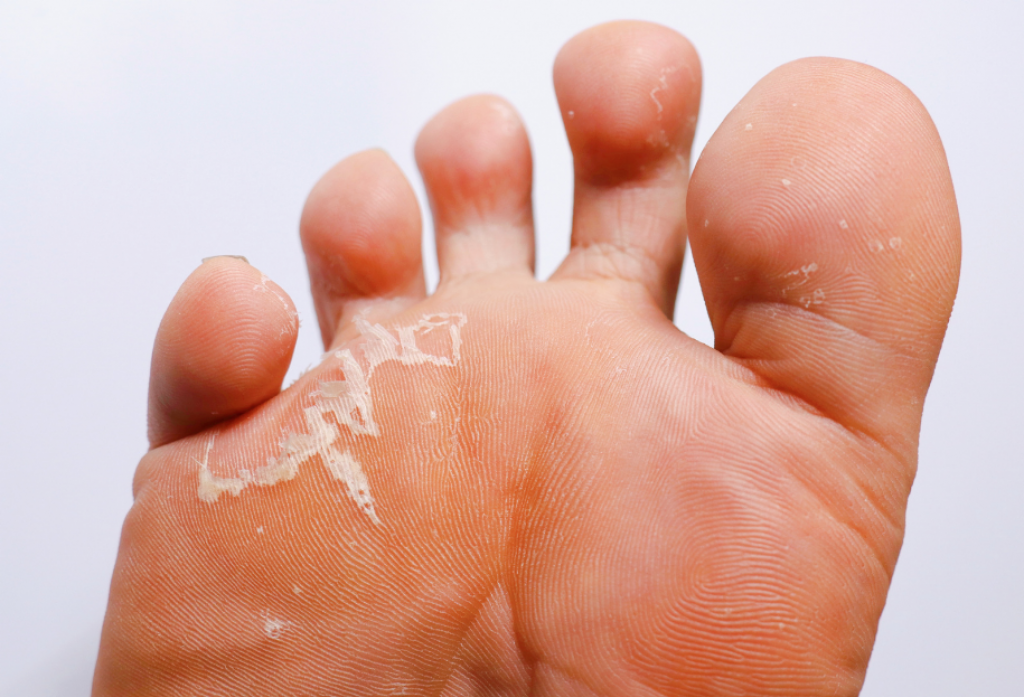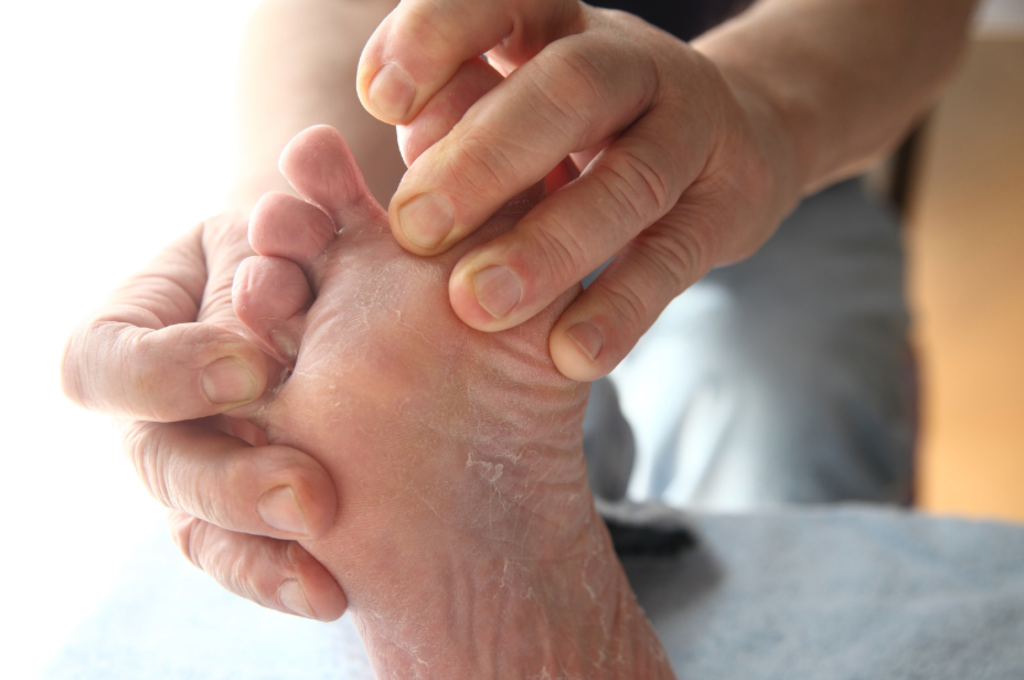 Athlete’s foot is a fungal skin infection that presents on the bottom of the feet and between the toes. Clinically, we call it tinea pedis. It affects the superficial (outer) skin layer and causes itching, blistering, scaling plaques and cracks in the skin which can become painful and inflamed.
Athlete’s foot is a fungal skin infection that presents on the bottom of the feet and between the toes. Clinically, we call it tinea pedis. It affects the superficial (outer) skin layer and causes itching, blistering, scaling plaques and cracks in the skin which can become painful and inflamed.
There are three distinct types of an Athlete’s foot infection:
- Interdigital – characterised by redness, maceration and blisters between the toes
- Moccasin – characterised by scaling plaques and redness on the heels, soles of the feet, and the outside of the feet. The markings on the skin appear white, and the top of the foot usually remains unaffected
- Vesicular – characterised by clusters of pustules on the bottom of the feet, especially in the arch and the ball of the foot
Not Just For Athlete’s
The name ‘Athlete’s foot’ was coined from an increased prevalence of this condition in athletes. This is because of their regular and long wearing of enclosed, hot and sweaty footwear during exercise, which is the ideal environment for fungus to thrive. Athlete’s foot can affect anyone that comes in contact with the fungus, even if they rarely exercise.
What Causes Athlete’s Foot?
There are three strains of fungus responsible for Athlete’s foot: Trichophyton rubrum, Trichophyton mentagrophytes, and Epidermophyton floccosum. The infection is spread through contact with the fungus, which can survive for months (and sometimes even years) in favourable conditions – dark, moist and damp environments. This makes places like changing rooms, public showers and gyms common sources of infection.
It is estimated that approximately 70% of people will have an Athlete’s foot infection at some point in their lives, with up to 20% of people affected at any one time. It is more common in men than women, and in those aged 31 – 60 years. You may have an increased risk of contracting this infection if you sweat excessively, have poor circulation, diabetes or a compromised immune system.
Not Just Fungus
Sometimes, you may have a bacterial infection as well as a fungal infection. A telltale sign of this is a strong odour coming from the feet.
Treating Athlete’s Foot

Treating Athlete’s foot for good involves both treating your current infection, helping repair any damage to the skin that has already occurred, and then removing the fungal spores currently present in your environment to help prevent re-infection.
Our podiatrists will recommend the right anti-fungal product for you to use based on your symptoms and lifestyle. We’ll also teach you the best ways to prevent re-infection – both now and in the future.
When your treatment is started, it’s very important to keep your feet as clean and dry as possible. This involves:
- Disinfecting surfaces that are high risk for re-infection – like your shower
- Changing socks regularly if you tend to sweat excessively – and wearing socks that wick moisture away from the feet
- Alternating pairs of enclosed shoes, to avoid wearing the same ones daily – this may not give them a chance to properly dry between wearing
- Letting your feet air where possible – alternate between open and closed shoes regularly
- Always drying your feet well between the toes. If you can’t reach your toes, make sure you scrunch your toes on a towel or have your significant other help with this
- Using disinfecting sprays or powders with your shoes and socks
Worried about a fungal nail infection?
If you’re worried that you may also have a fungal nail infection, it’s a good idea to have it treated together with your Athlete’s foot fungal infection. The best treatment currently available for a fungal nail infection is cold laser. Learn more about antifungal laser here.
To start treating your Athlete’s foot fungal infection, book your appointment with our team today.
